daylight

daylight
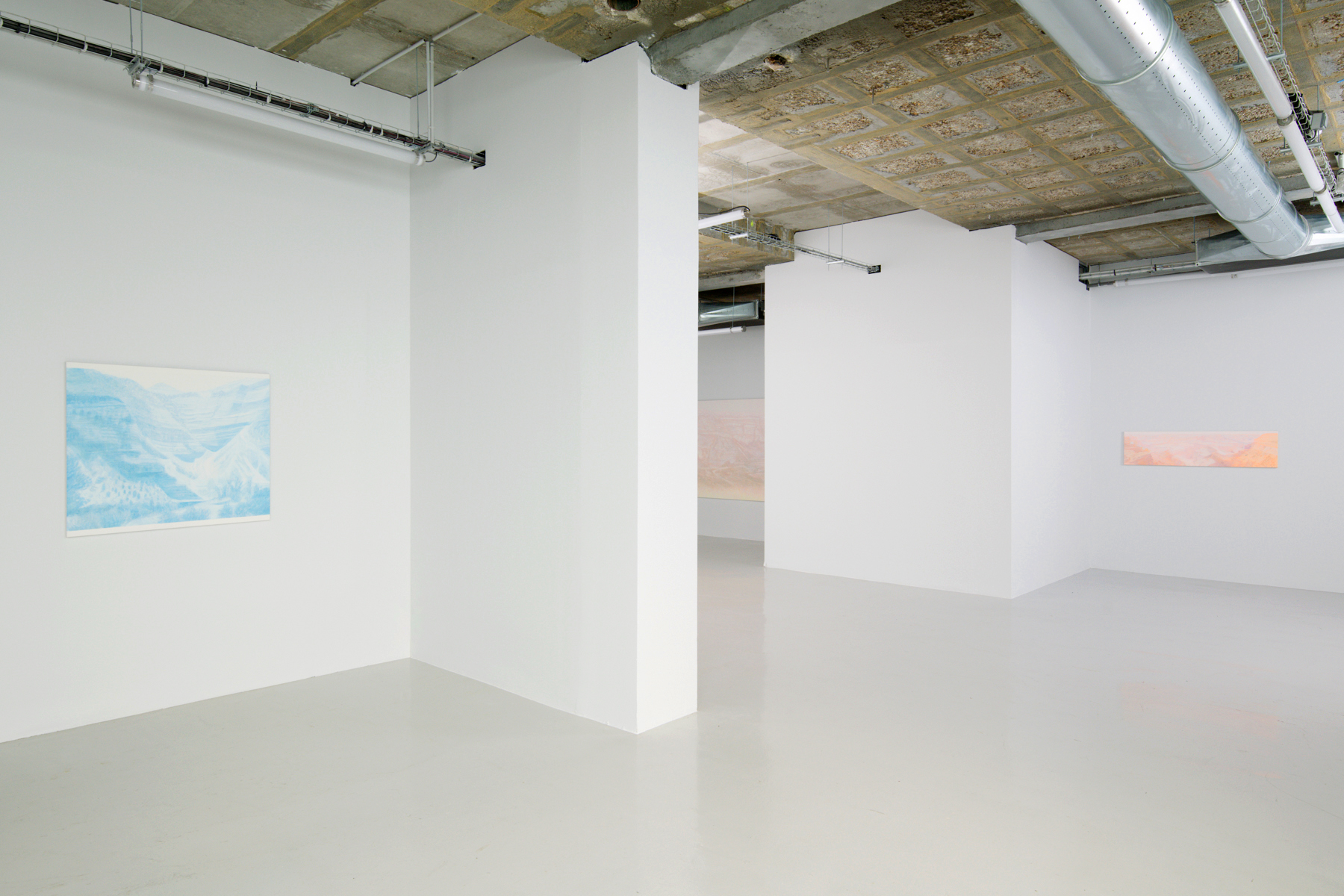
daylight
Exhibition view
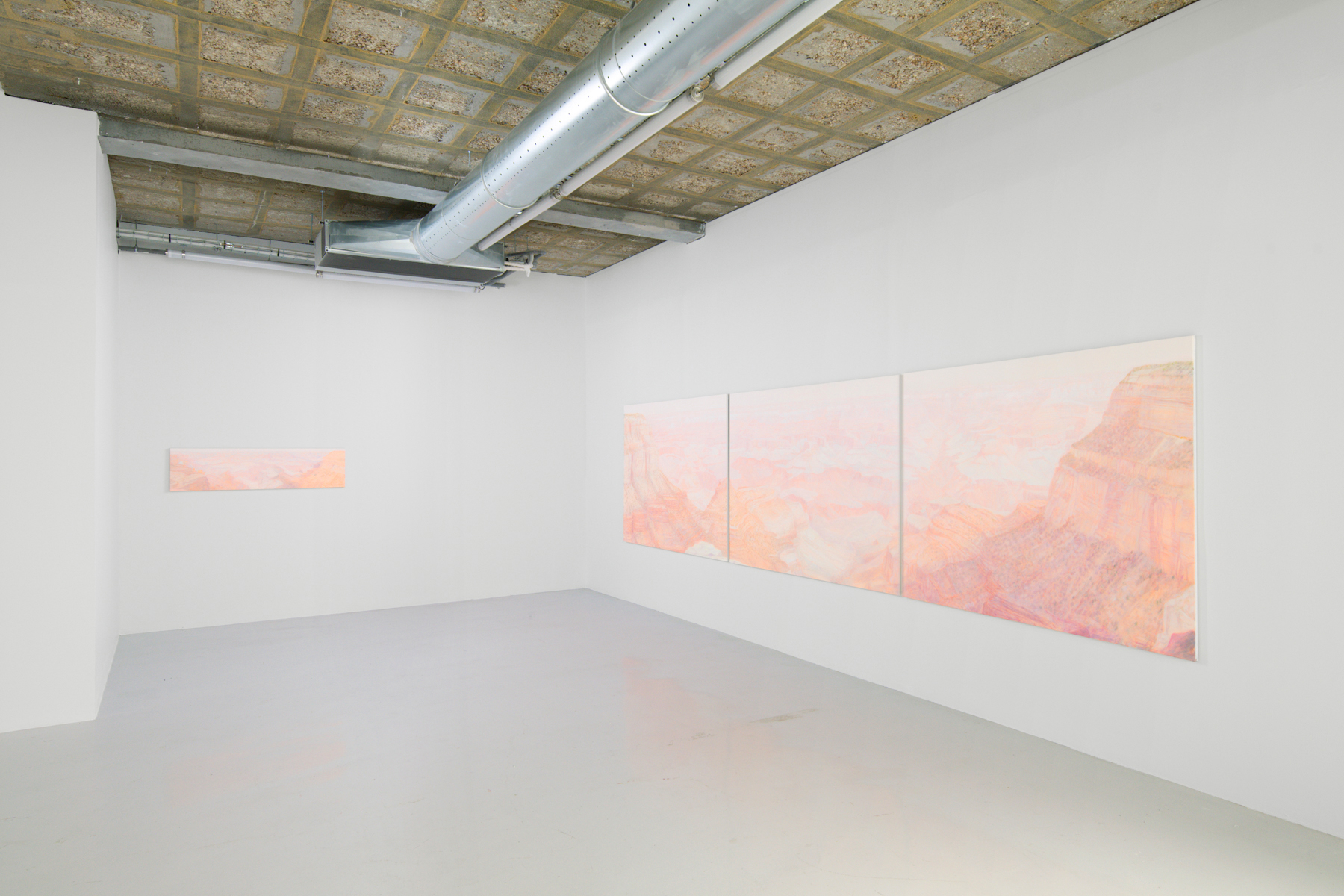
daylight
Exhibition view
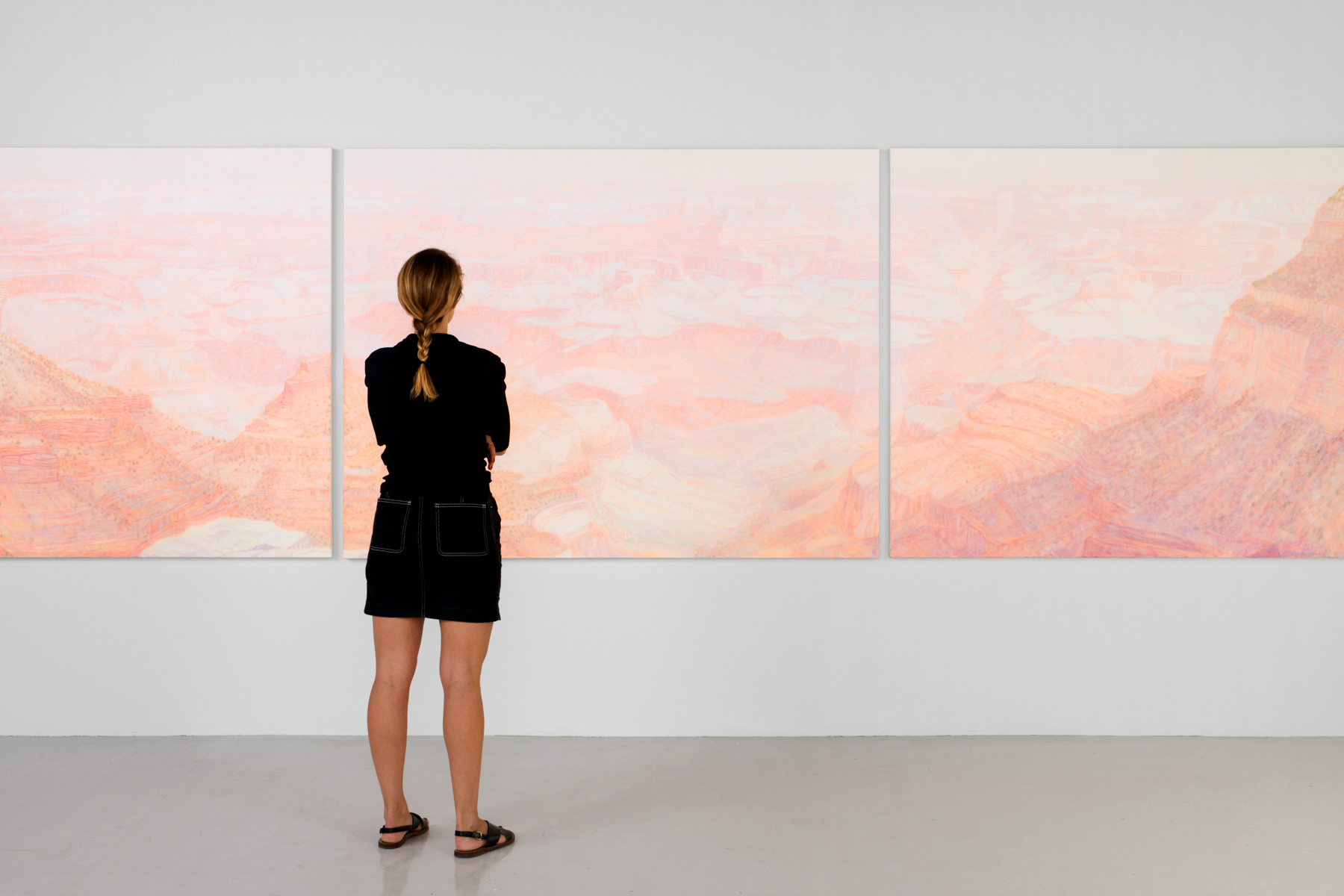
daylight
Exhibition view
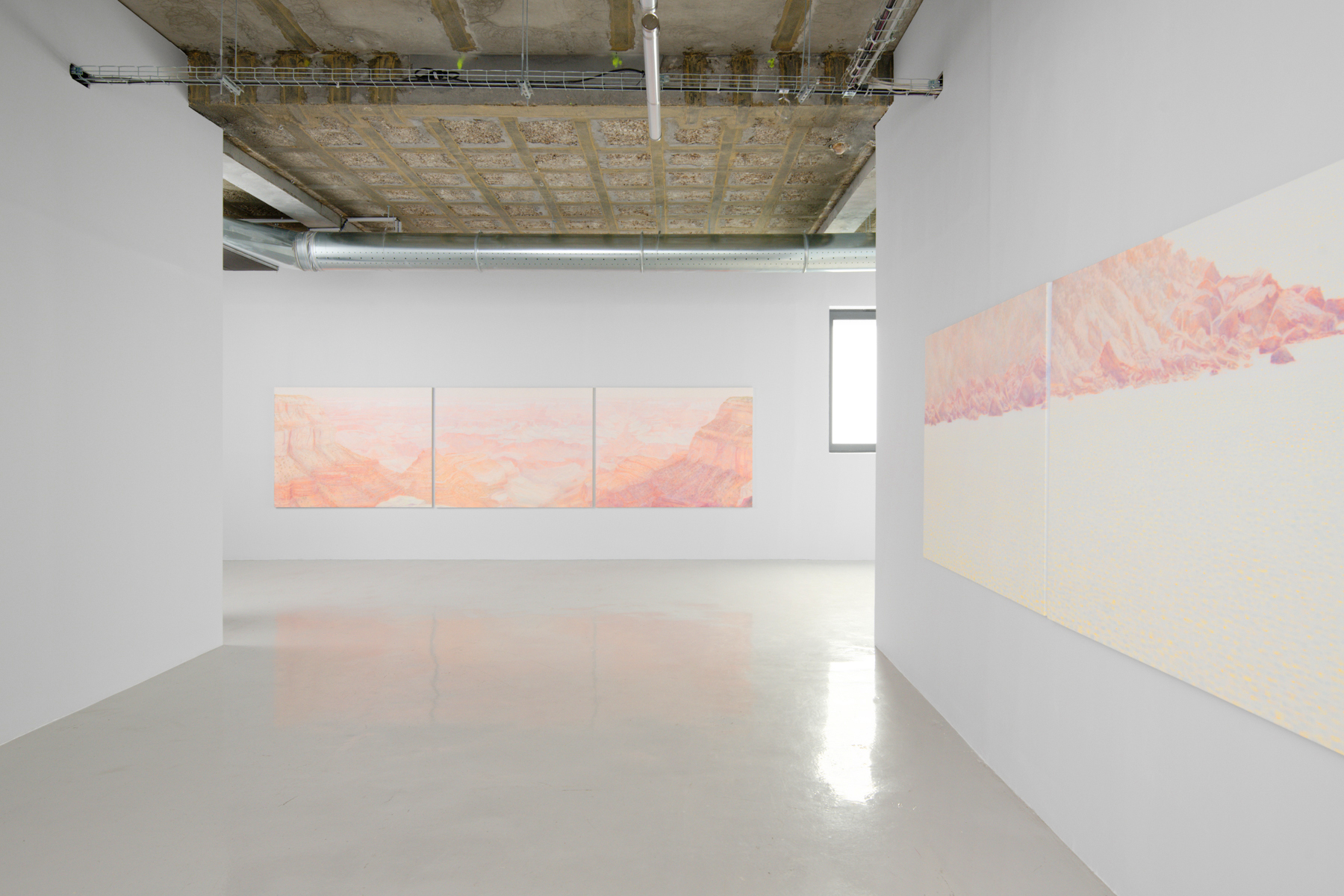
daylight
Exhibition view
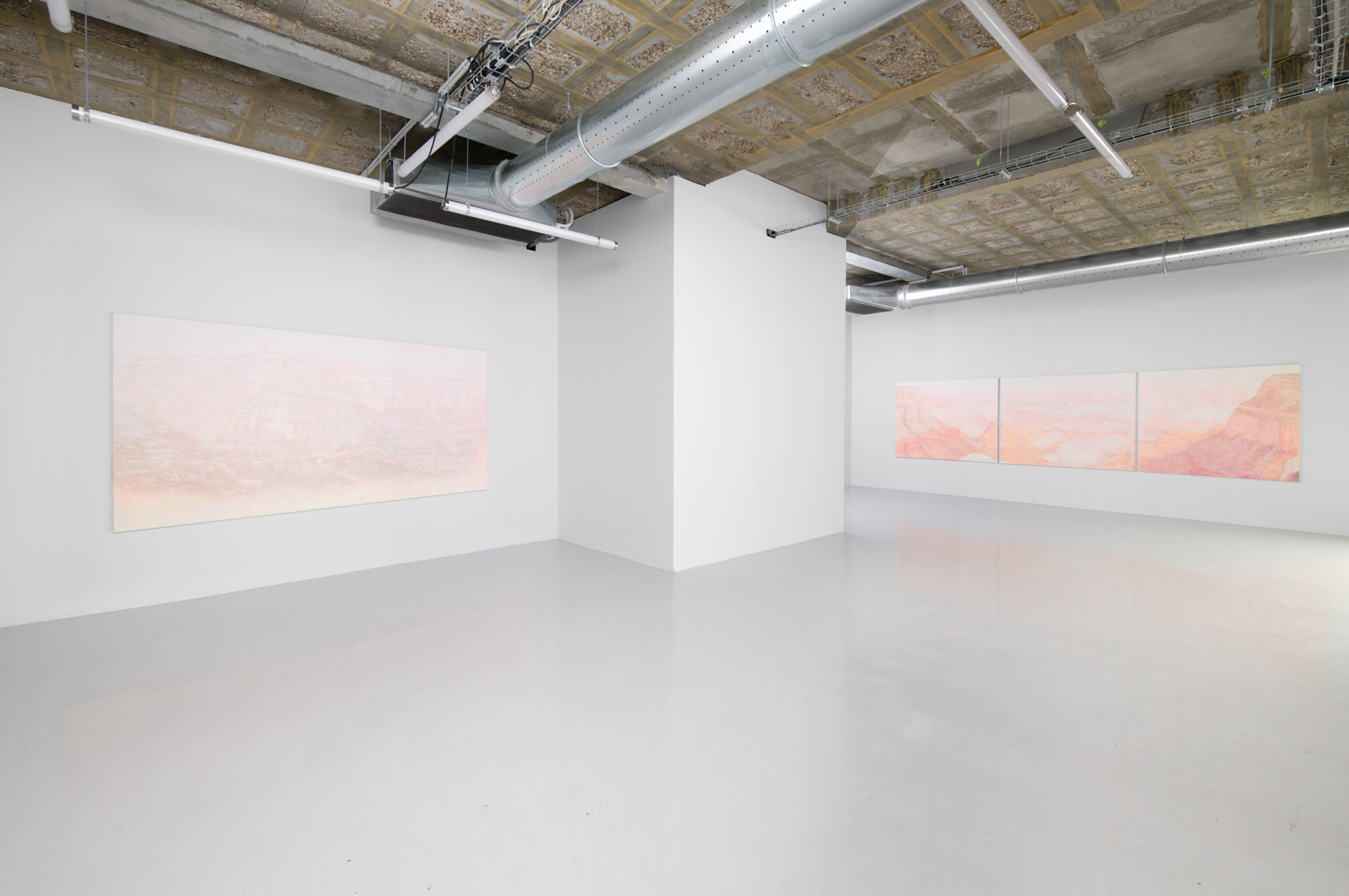
daylight
Exhibition view
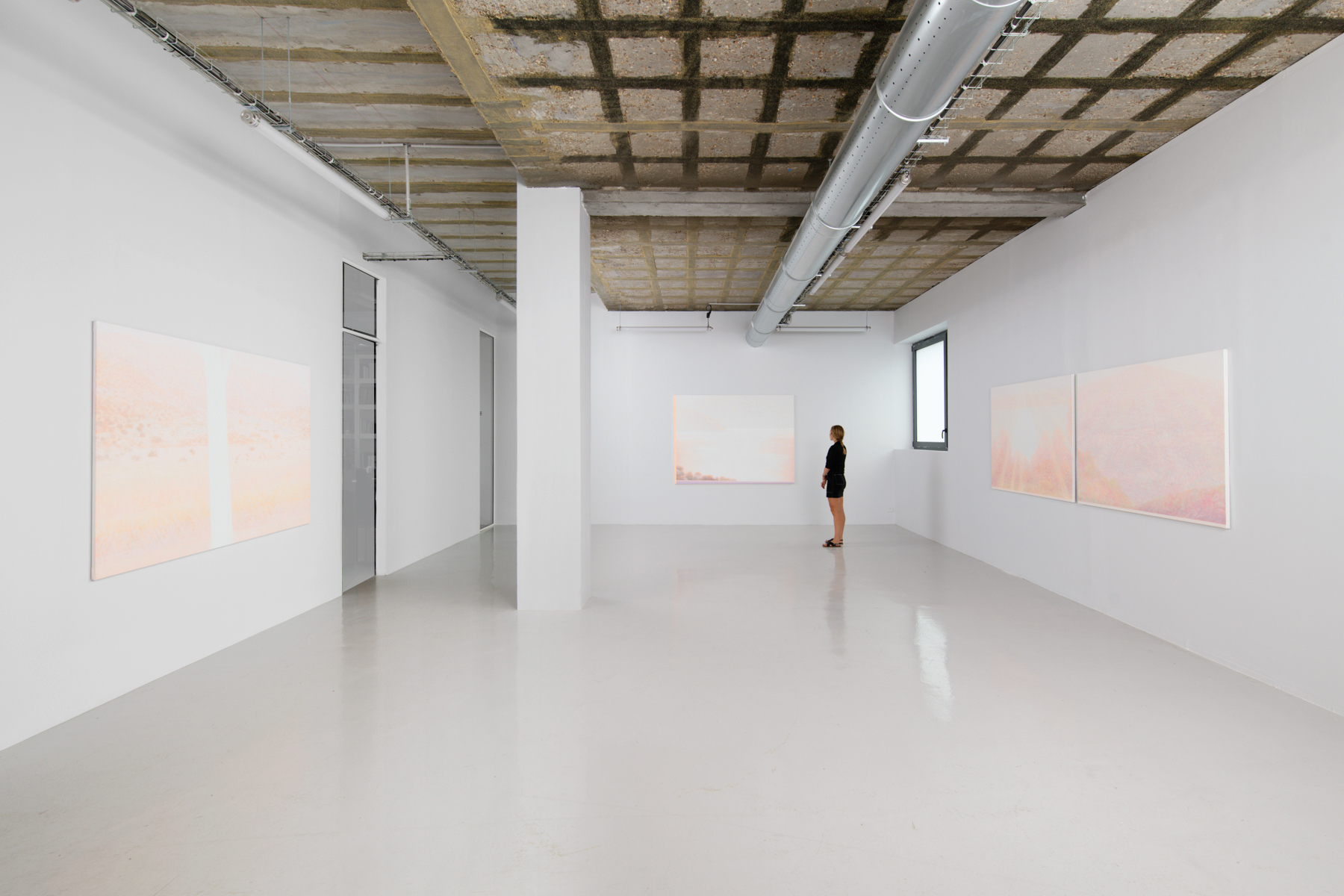
daylight
Exhibition view
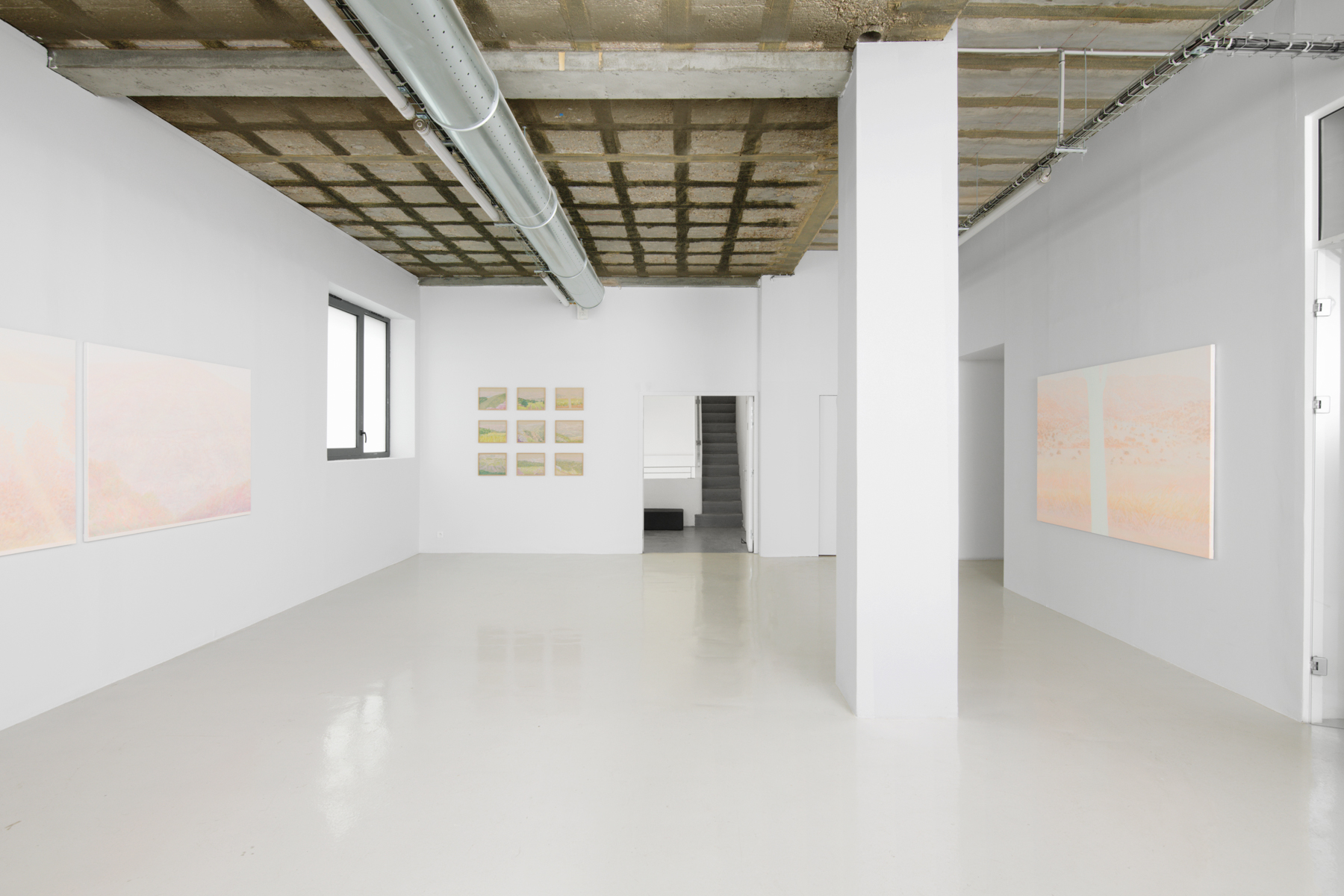
daylight
Exhibition view
OPENING SUNDAY, SEPTEMBER 8TH, FROM 3 TO 7PM
Daylight
By Fares Chalabi, September 2024
Apparition
An apparition is a point of encounter between two distinct dimensions ? for example, the apparition of the angel of the Annunciation, where the celestial meets the terrestrial. A mountain at sunset is transfigured into an apparition, the rocky mass becoming a being of air and light. Angels often appear in the figure of a mountain[1]. The rocky mass and celestial creatures, in moments of grace, come to us as apparitions, reaching the plane of the apparitional. In these moments, we are stunned by the astonishing new life of things. When an angel passes by, silence precedes, the inner monologue falls silent[2], the noise of the world murmurs ? a moment of contemplation. Only God, when he approaches this plane, does not appear but incarnates. It is in this sense that the angel's apparition to the virgin is an annunciation: the angel's apparition having as its counterpart the incarnation of the Word. The apparitional plane exists, we experience it, we witness it, any being can come and stand on it for a while, except God.
Emanation
If Daniele Genadry's paintings provoke silence and induce contemplation, it's because they have something to do with these stories of angels, insofar as they are apparitional paintings. These paintings are points of encounter between two dimensions: that of the pictorial space and the real space, the depicted space we see in the painting and the real space from which we see the painting. Genadry's means to create the fusion between the pictorial and the real space consist in making the light that seems to emanate from the painting, belonging to pictorial space, and the ambient light that illuminates the painting, belonging to real space, indistinguishable. A new way of treating light is introduced: we are no longer faced with a light that would be caught in the pictorial space, like that of Giotto for instance, where the light in the painting is clearly distinct from the light that illuminates the painting, a classical light that accompanies a conception of painting as an opening onto another world; nor are we faced with an ambient light that would merely sweep across the surface of the painting, illuminating it so that we can grasp the various elements that structure its composition, as in the paintings of Manet or Klee[3]. The white, thinly pigmented areas, where we can almost see the naked canvas, reflect the ambient light of the room while, at the same time, capturing this light in a motif ? that of a mountain, a glittering sea, a valley. The figurative motif is crucial to capture the ambient light in another world, the represented world. The fact remains that it is a very real light that we see as emanating from an imaginary world. The painted motif is thus, in a way, always painted on the edge, even when it occupies the center of the picture; painted on the edge precisely because it is only one component of this visual machine that aims at creating a point of indistinguishability between the ambient light and the pictorial light, the motif receding to free up this white area where the two lights merge. And so the background of the painting meets the luminous background, and Genadry's paintings seem to emit the light of the room in which we find ourselves. This luminous emanation carries in its turn the motif that seems to take shape in front of our gaze, in front of the eye that contemplates, that is caught in the silence of the apparition. Faced with this light, the eye dilates, and patiently begins to see, becoming accustomed to this new light: details, a stone, a blade of grass, form before our eye, slowly rising up from the white background. In this way, Genadry's paintings bring the motif as a whole into being in front of the viewer's gaze. Angels, too, gradually take shape before our gaze. It is in this sense, that these paintings mobilize a frontal gaze, a gaze that stares at a distant point on the white surface and sees the various landscapes come forth, like emanations[4] ? it is not customary to paint an angel in three-quarter view, the height of profanation. Whereas modern painting was defined by a mobile eye, flatness, composition and ambient light ? elements that were at the service of the act of reading the painting ? Genadry's apparitional painting presents a new constellation: the eye is fixed, the flat surface infinitely deep, the light a fusion of two lights, the embodied eye dilates and through the movement of the flesh gains access to vision. Apparitions seem to have incarnation as their counterpart. Genadry's various paintings, suspended in the same room, define a luminous volume, a fragment of day. Light on light.
Beauty
Reading is the perceptive form that characterizes the disciplinary regime[5]: it is tantamount to grasping the meaning of things by apprehending their position in space and time ? the place of schoolchildren indicating their performance, the neighborhoods of the rich and the poor, etc. The reading eye moves from one element to another in order to understand its meaning, and is therefore inseparable from an analysis of space and time. Composition is the arrangement of the various elements that will be presented to the eye. In this sense, power composes in space and time, and submits it?s compositions to its mobile eye. Composition can thus have a repressive function, a policing function, the police being the assignation of each person to its place, its rank, neighborhood, etc. so that the panoptic eye can read[6]. Beauty, defined as the free play of the faculties[7] ? and therefore as the experience of an eye that scans the elements of a composition without being able to grasp their meaning or assign to each one of them a place in the whole ? frees the eye that starts to move in all directions. When faced with a successful work of art, there is a ?je ne sais quoi? that makes it beautiful. The kinds of painting, which are based on composition and aim to experience the beautiful, subvert the perceptual modality proper to the disciplinary regime. This Kantian conception of beauty fades away with the emergence of a new type of power, biopolitics and control societies[8], which mobilizes a different perceptual modality, not to read but to forecast, to preview, to see in advance. This new modality is based on information and computation systems, which aim at modulating mass behavior through the propagation of clichés, viral images, television news, advertising and so on. Here, power has a fixed eye, a center towards which all information converges, an omniscient eye. In this new regime, the aesthetical experience paradigm is that of the nervous shock, convulsion and direct impact, a paradigm that takes the place of that of reading and appreciating the composition of an art work. The art work is conceived in a different way: it is no longer a composition offered to a reading eye and aiming to give to this eye a new freedom of movement, but it consists now in arrangements facing a fixed eye so that the one seeing can experience the shock of a singularity in a kind of direct apprehension. A fixed eye mesmerized by the screen showing the world passing by, an eye that absorbs the clichés carried by electronic light, replaces the eye that applies itself to deciphering words by the light of a bedside lamp. The force of presence, restoring the presence of things, wresting them from their clichéd covering and getting in touch with reality, are the mottos that structure, albeit in a vague way as if in the air of the times, the critique of our contemporary world. Genadry's painting is part of this atmosphere, aiming to give presence to the images she finds on the internet or takes with her digital camera. She works with ordinary images, those that circulate and prevent us from seeing. Her gesture consists in finding a crack in each image, the interstice through which she can open them so that they become visible again, but also so that they make visible the very thing that they used to make invisible. The apparitional structure of her paintings allows these motifs to come into presence, and make us see again what we've become unaccustomed to seeing by virtue of overseeing. If the disciplinary age called for a liberation of the eye by setting it in motion on a composition ? free play of the faculties ?our age requires another form of liberation, a liberation from that which cuts us off from reality, distances us from the world, a liberation from virtual worlds and consequently a liberation towards the incarnate presence of things. Beauty takes on the broader meaning of an object that is given to our senses and provokes the experience of a moment of freedom. In this way, beauty is always subversive, political, insurrectionary. Genadry often defines beauty as a force of presence, the force of a mountain's presence, a presence that makes us feel that we are there, embodied. Presence, today, would name what it means to be free. We feel that the struggle against policing forces that function by disciplinary assignations, that even the commonplace praise of indiscipline in art, is from another time ? the struggle is elsewhere. Power today is less about a policing of places and more about strategies of dispersion, agitation, fragmentation of attention, atomization, the multiplication of virtual lives, accelerations that lead nowhere, the noise of social networks, and so on. Genadry's paintings, on the other hand, make us aware of where they are; they are paintings that bring us back to reality, that incite us to see the light that surrounds us. These paintings are optical machines that subvert representation insofar as the motif serves to allow the viewer to become present to herself and present to the world, rather than being the point through which the viewer absences herself from herself and the world. Genadry's paintings are structured in such a way that the elsewhere, such as the imaginary worlds or the virtual, refers to the here, the real world or the actual. Embodying oneself, being present to things, seeing the world as an apparition, making contact with the real, characterizes, today, one side of the struggle against digital powers. It becomes a means of freeing oneself from their grip, a moment of grace, a sunny day.
Luminism
The dream of a harmonious synthesis of man and nature through technology, Monet?s dream, is now nothing but a bitter illusion. The painting, which in certain respects attempted to reproduce daylight by relying on the science of color[9], has now been replaced by a kind of painting that aims to show us the light of the day itself. It is in this sense that Genadry's chromatic fragmentation, her divisionism, is required by different prerogatives than those of the impressionist and neoimpressionist movements: contrast of the smallest difference and no longer of the complementary colors, contrast aimed at reflecting light rather than reproducing it with artificial means. After all, the garden at Giverny is arguably the first industrial studio, a precursor of the great Hollywood studios, a studio that organizes nature in an enclosed space to create a truer-than-nature image. With Genadry, contact with the landscape is immediate and direct, and does not aim to reproduce the visual impression, but aims to redirect our gaze towards the object itself, rather than its reproduction. This calls for a physiology of the eye that replaces the science of color: the eye needs to contract, dilate, wrinkle its eyelashes and remain fixed, in order to see the minimal contrasts that bring the motif to slowly appear before its gaze. The embodied eye is no longer the cerebral eye of the chromatic circle, nor the one that synthesizes the colors in the optical mixture to appreciate the power of the colored motif, but is rather an eye that dilates and opens onto a seemingly white wall and, for a moment, in this opening, sees the world surrounding it, in a kind of epiphany of reality. Genadry's divisionism thus serves luminism rather than colorism, a luminism that refers us to the light bathing us, to our presence, our body, to the fact of being here. And this light, which carries landscapes and fragments of the world, has something spectral about it, something of an announcement of a world to come, or of the end of our world. The progressive dream of the union of man and nature through science and technology ? the creation of an artificial lake to better paint nature ? gave rise to a light produced by optical synthesis and chromatic contrast, while Genadry's spectral, but very real, light sees the world as on the verge of disappearing, the techno-scientific dream having been realized in ecological nightmare and nuclear threat. Bringing nature to apparition, seeing it in all its splendor rather than seeing it as a set of forces to be tamed or mastered, feeling oneself there as one gazes upon this glittering sea, this valley or that mountain, tearing nature away from its technoscientific subsumption and opening oneself up to its apparitional presence, would perhaps be a way of delaying its disappearance. In a way, violence is most often used against that which doesn?t have a face[10], that which does not or cannot appear and impose itself on us by the power of its grace. Creating a faceless nature, a nature that doesn?t reach the splendor of the apparitional, a nature made of mechanisms, prepares for its destruction, just as faceless populations prepare for genocide ? ninety-three thousand three hundred and fifty-sixdead in Gaza and not a single face, nor moment of grace. How can we see the face of the world, the last surface, the one that is closest, the most manifest, the one that stands there before us, but that we keep leaving for the depths of matter or the heights of the idea - Remaining with the world as apparition, would be the third way that could make us see the world in its scintillation, the world as a pure manifestation that is no longer just matter or some symbol for some idea.
Presence
Presence is one of the figures of time. With Bergson[11], duration was presented as one of the ways of resisting spatialized, mechanized time, the time of the industrial age. In duration, time is a moment, a synthesis that fuses the near past and near future, the moment of twilight, seasonal variations, the time of water lilies. To live a duration, to couple one?s inner duration with the duration of things, was a way, as Monet so aptly achieved it, to free oneself from the mechanized time of industrial warfare ? waterlilies in the face of the butchery of the First World War. Hiroshima and Nagasaki opened up another form of warfare, and another experience of time: total and instantaneous destruction instead of the timed discipline of the trenches; destruction in real time. In real time, there is no delay between intention and action, action and execution, the transmission of information and the reception of information. Real time is the time of the instantaneous[12] ? transactions and information in real time. In such a time any announcement, any messenger, becomes unthinkable, even useless[13]. In real time, the virtual is immediately actualized ? all we have to do is dream about something, remember a friend, have a desire, and the thing itself is there in front of us. The metaverse is the promise of being able to experience anything in real time ? attend a concert, see a friend on the other side of the world, while remaining at home. In the face of real time, we no longer rely on duration, on the synthesis of moments fragmented by analytical time, since in real time neither action nor intention need to unfold according to the divisions of time in order to be actualized. It could be said that the dream of virtual worlds is precisely to banish all virtuality, to create a world where any desire would immediately project us into the experience of consuming the object of desire: a world of total actuality. Against the laboratories of the real and the technologies of presence developed by the Tech companies, an art of presence would develop a temporal circuit in which virtuality ? the motif represented, for example ? is crafted in order to reflect the actual world, and in this reflection bring this world to a new intensity. In apparitional painting, the difference between the motif we grasp in the pictorial sphere and the actual light we perceive is maintained; the two spheres are distinct yet indistinguishable, one giving to the other what the other cannot give, the pictorial light transfiguring the room where it radiates, and the actual light turning this imaginary light into a concrete presence. The experience of the real thus needs to be surrounded by a fringe of virtuality, but a virtuality that manages to capture and present the real as such. In this way, Genadry proposes a different relationship between the abstract and the figurative, no longer a figurative representation that would depict another world, nor an abstraction that would capture the real beneath visual appearances[14], but a figurative representation that points back to the real itself, here and now. In this circuit between the here and the elsewhere, apparition shines forth. The time of the apparition is the time required for the dimensions of the virtual and the actual to come together in presence. It is a slow time whose counterpart is a slow light, the time of the eye's dilation and of the silence that spreads. The wait reaches an end in the face of the apparition, the annunciation is the moment of conception, time is no longer deferred, the imaginary and the real ends up forming a circuit in which every projection into the virtual or pictorial space refers us back to the present, and every real perception projects us in its turn back into the virtual. It is a circuit in which we no longer wait or absent ourselves, but rather, where we feel ourselves inhabiting our present. Genadry's temporal machine makes time turn peacefully on itself, a time without expectations nor haste, the time of daylight.
[1] J. Toufic, What Was I Thinking?, New York, Sternberg Press, 2018; The Aura: an Approach.
[2] J. Toufic, Undeserving Lebanon, Forthcoming Books, 2007; To pray or not to pray.
[3] M. Foucault, Manet and the Object of Painting, London, Tate Pub, 2011, trad. M. Barr.
[4] J. Toufic, What Was I Thinking?, op. cit.; Thinking across lapses of consciousness if not being.
[5] M. Foucault, Discipline & Punish: The Birth of the Prison, New York, Vintage Books, 1995, trad. A. Sheridan.
[6] J. Rancière, The Emancipated Spectator, London & New-York, Verso, 2009, trad. G. Elliott.
[7] I. Kant, Critique of Judgement, Oxford; New York, Oxford University Press, Revised edition, 2009, trad. J.C. Meredith.
[8] G. Deleuze, Foucault, USA, University of Minnesota Press, 1988, trad. S. Hand; Post-scriptum to the societies of control.
[9] P. Signac, D?Eugène Delacroix au Néo-Impressionisme, Paris, H. Floury, 3, 1921.
[10] E. Levinas, Totalité et infini: essai sur l?extériorité, Le Livre de Poche, Le Livre de Poche édition, 1990.
[11] H. Bergson, L?évolution créatrice, Paris, Presses Universitaires de France - PUF, Puf édition, 2007.
[12] E. Sadin, La vie algorithmique: Critique de la raison numérique, Paris, L?Echappée, 1, 2021.
[13] J. Toufic, (Vampires): An Uneasy Essay on the Undead in Film, Post-Apollo Press, Rev Exp, 2003, p. 205.
[14] P. Klee, On Modern Art, London, Faber, 1966, trad. P. Findlay.